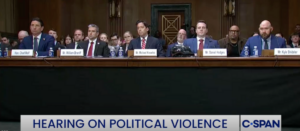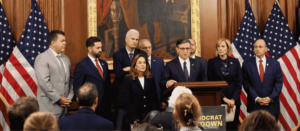This week, Meta, the parent company of Instagram, announced new PG-13 content restrictions that will automatically apply to all Instagram accounts belonging to users under the age of 18. Minors will not be able to opt out of these restrictions without a parent’s permission. The same limitations will also apply to Meta’s AI-powered “digital companions,” which have been found to engage in sexually suggestive conversations with minors, a product feature known to Meta.
Meta first introduced “teen accounts” in September 2024 in response to growing concerns that young users were being exposed to sexual advances, harassment, and bullying on the platform. The company promised that these new accounts would better protect minors by making them private by default and by tightening messaging controls and content filters.
However a new report released in late September 2025, Teen Accounts, Broken Promises: How Instagram Is Failing to Protect Minors by Arturo Bejar, a former Meta employee turned whistleblower (in cooperation with Fairplay and other advocacy groups) found that Meta had failed to deliver on many of its safety promises. The report concluded that Instagram continued to recommend inappropriate and harmful content to minors, and it urged Meta to ensure that content served to a 13-year-old’s account should be “reasonably PG-rated.” The authors also called for the company to gather data directly from teens about their exposure to sensitive content, including its frequency, intensity, and severity.
Meta’s latest announcement appears to be a direct response to the Bejar report and to concerns raised in recent Senate subcommittee hearings.
The company said it is borrowing the Motion Picture Association of America (MPAA) rating model to help parents better understand what their children will—and will not—be exposed to on the platform.
According to Tara Hopkins, Meta’s global director of public policy, “We’re doing this to really speak the language of parents who are much more familiar with movie ratings in terms of kind of a familiar model for those who are using Instagram.”
Max Eulenstein, Instagram’s head of product management, echoed this messaging point, stressing that the company chose the PG-13 standard because it’s a familiar and trusted framework for parents. “Our North Star in the teen experience is parents and what they’re telling us they want for their teens … That’s what led to this development and why we focused on the PG-13 standard.”
Still, parents should understand that a PG-13 environment online is not the same as seeing a PG-13 movie in the theater.
While a movie can be prescreened for absolute certainty about the content, social media is open-ended and constantly evolving, making any attempt to filter or block content imperfect, at best.
What Parents Need to Know:
- A fair bit of adult content still reaches teens. Even with new restrictions, a significant amount of mature material can continue to reach young users through Instagram’s algorithms, influencer culture, and peer networks. Explicit material and adult themes may slip through. PG-13 content, as defined by the MPAA, can include some strong language, mild violence, and partial nudity, though Meta stated it will not recommend or promote any content containing nudity to teen users.
- Ratings creep also means PG-13 doesn’t mean what it used to mean. Content standards for ratings tend to become looser over time. You may find that even limiting your child’s Instagram feed to a PG-13 standard may still expose them to too much sex, violence, and profanity.
- Trust but verify. Review your teen’s settings, monitor their activity, and have open conversations about what they’re seeing online. Make sure you know your child’s passwords and use filtering software in addition to parental controls.
- Delay, delay, delay. The best protection is postponing social media use until children are emotionally and developmentally ready.
- More restrictive settings are available. Parents can manually tighten controls beyond the default PG-13 level.
Meta’s new policy is a step in the right direction, but implementation matters. Protecting children online requires more than ratings and restrictions; it requires vigilance, transparency, and a commitment not to destroy lives or harm children in the pursuit of engagement and profit.






